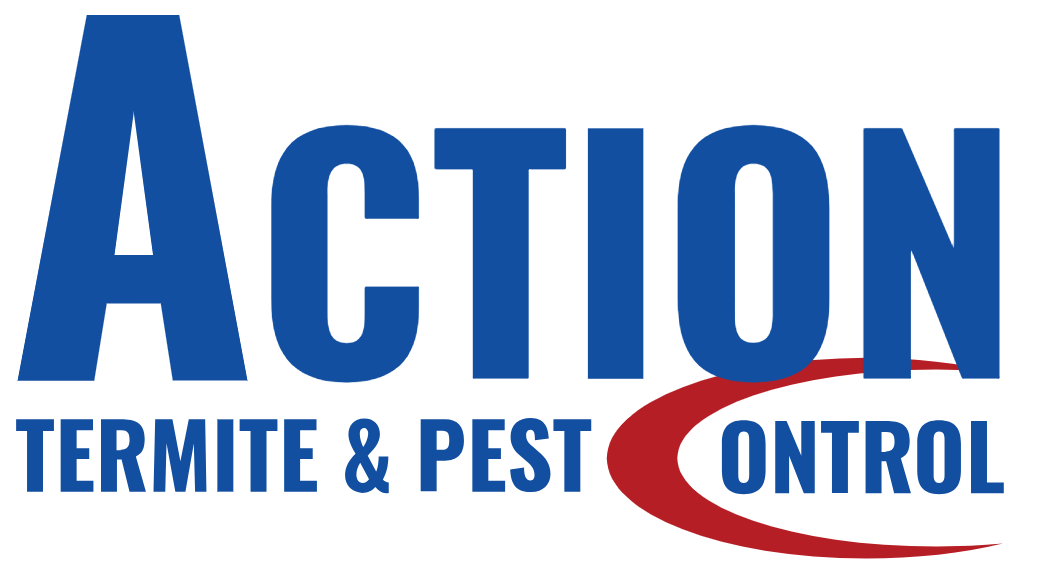Termites are commonly known as pests that cause damage to wooden structures, but are they dangerous to humans? This article will explore the potential health risks associated with termites, including termite bites, the impact of termite infestations on health, and methods for preventing and controlling termite damage. By understanding the behavior and risks posed by termites, homeowners can take proactive measures to protect their homes and ensure the safety of their occupants.
Key Takeaways:
- Termites pose a threat to wooden structures but are not typically dangerous to humans.
- Termites have a specific diet consisting of cellulose-based materials like wood.
- While termites may bite when threatened, their bites are generally harmless, but individuals with sensitive skin may experience allergic reactions.
- Termite infestations can impact human health through respiratory issues, allergic reactions, and spreading of fungal infections.
- Preventing and controlling termite damage requires early detection, regular inspections, and appropriate treatment options.
Understanding Termite Behavior and Human Risk
Termites are fascinating creatures with unique behaviors that contribute to their reputation as destructive pests. In this section, we will explore termite behavior and the potential risks they pose to humans. By understanding their diet, habits, and threats compared to other common pests, we can better comprehend the impact of termite infestations.
The Diet of Termites: Why Humans Aren’t on the Menu
Termites have a specialized diet primarily consisting of cellulose-based materials such as wood, cardboard, and plant matter. This preference for cellulose is what makes them a threat to homes and other structures built with wood. However, despite their ability to cause extensive damage to wooden materials, termites do not consider humans as a food source.
Unlike blood-sucking pests like mosquitoes or ticks, termites do not rely on human blood or flesh to survive. They are not known to bite humans for sustenance or transmit diseases. Termites have evolved to efficiently break down and digest cellulose-rich materials, but they do not possess the biological mechanisms to consume or digest human tissue.
This is reassuring news for homeowners concerned about termite bites or direct threats to their well-being. While termites can undoubtedly cause significant structural damage to properties, their interactions with humans are generally limited to the destruction of wood-based materials.
Comparing Termite Threats to Other Common Pests
When it comes to pests, termites are often mentioned alongside other nuisance insects such as ants, cockroaches, or rats. While each of these pests can cause distress and damage in their own ways, termites pose a unique threat due to their ability to silently and surreptitiously consume wood.
Unlike ants or cockroaches, termites can go undetected for long periods, making their presence even more dangerous. By the time homeowners notice signs of termite activity, significant damage may have already occurred.
Additionally, termites can compromise the structural integrity of a property over time, potentially leading to costly repairs. Other pests may cause health concerns, such as allergens from cockroaches or diseases transmitted by rodents, but termites primarily target the physical infrastructure of a building.
It’s essential to consider termite threats alongside other common pests to prioritize effective prevention and control measures. By understanding the unique risks posed by termites, homeowners can take appropriate action to protect their properties and reduce the likelihood of severe damage.
Termite Bites: Assessing the Real Hazard
Although termites are not known for biting humans, it is important to understand the potential hazards of termite bites. Termites have specialized soldier termites that are capable of biting when they feel threatened. While these bites are generally harmless, individuals with sensitive skin may experience allergic reactions such as itchiness, swelling, and redness.
It is crucial to note that termite bites are rare and usually occur only in cases where there is direct contact with the termites or disturbance of their habitats. Most people will never experience a termite bite in their lifetime. Therefore, the real hazard posed by termite bites is minimal.
To mitigate any potential risks, it is advisable to avoid contact with termites and their colonies. If you suspect a termite infestation in your home, it is best to seek professional assistance for proper identification and treatment. This will help ensure the safety of your home and reduce the chances of termite bites or allergic reactions.
While termite bites are generally not a significant human health hazard, it is essential to address any termite infestations promptly. By taking proactive measures to prevent and control termite activity, you can protect your home and minimize the risks associated with termite bites.
Termite Infestation Symptoms and Their Impact on Health
A termite infestation can have various symptoms, indicating the presence of these destructive pests in a home. Understanding the symptoms and their impact on human health is crucial for taking appropriate action to mitigate the risks. In this section, we will explore the connection between termites and respiratory issues, allergic reactions, and the role of termites in spreading fungal infections.
The Connection Between Termites and Respiratory Issues
Termite infestations can contribute to respiratory issues in individuals living in affected homes. When termites chew through wood, they release tiny particles of dust and debris into the air. These particles, known as termite frass, can become airborne and be inhaled by occupants of the property. Inhaling termite frass can potentially irritate the respiratory system, leading to symptoms such as coughing, wheezing, shortness of breath, and chest tightness. Individuals with pre-existing respiratory conditions, such as asthma or allergies, may be more susceptible to these respiratory issues.
Can Termites Trigger Allergic Reactions?
Termites have the potential to trigger allergic reactions in certain individuals. When termites infest a home, their feces and saliva can become airborne, causing allergic reactions in sensitive individuals. Common symptoms of termite-related allergic reactions may include itching, redness, swelling, and hives. In severe cases, individuals may experience difficulty breathing, tightness in the chest, and even anaphylaxis. It is important for individuals who suspect they may have an allergy to termites to seek medical attention for proper diagnosis and management.
The Role of Termites in Spreading Fungal Infections
In addition to respiratory issues and allergic reactions, termite infestations can also contribute to the spread of fungal infections. Termites create tunnels and galleries within wooden structures, creating a warm and humid environment that is conducive to fungal growth. As these fungi multiply, they release spores into the air, which can then be inhaled by occupants of the infested property. Inhaling these fungal spores can lead to respiratory infections and other health issues. Individuals with compromised immune systems, such as the elderly or those with underlying respiratory conditions, may be particularly vulnerable to these fungal infections.
By understanding the symptoms associated with termite infestations and their impact on health, individuals can prioritize prompt action to address the infestation and protect their well-being. Early detection and professional intervention are crucial in effectively managing and eliminating termite infestations, minimizing the health risks associated with these pests.
Are Termites Dangerous to Humans?
Termites are commonly known as pests that cause damage to wooden structures, but what about their impact on human safety and health? Understanding the potential dangers posed by termites is essential for homeowners to protect themselves and their properties. This section will provide a comprehensive answer to the question of whether termites are dangerous to humans.
Termites may not directly pose significant health risks to humans, but they can indirectly impact human safety and well-being in several ways. While termites are not known to bite humans or feed on them, their presence can result in certain health concerns. It’s important to be aware of the potential risks associated with termite infestations to take appropriate measures.
One of the primary dangers of termites is the extensive damage they can cause to structures. If left untreated, termite infestations can weaken the structural integrity of buildings, leading to potential collapses or safety hazards. The destruction of wooden support beams, floors, and other load-bearing elements can compromise the stability of a property, putting inhabitants at risk.
Additionally, termite infestations can indirectly contribute to respiratory issues. Termites produce dust and debris as they tunnel through wood, which can become airborne and trigger allergies or respiratory sensitivities in some individuals. People with pre-existing respiratory conditions or allergies may be particularly susceptible to these effects.
Furthermore, the presence of termites can indicate excessive moisture or dampness in a property. Moisture problems can lead to the growth of mold and mildew, which can have adverse effects on indoor air quality and overall health. Inhaling mold spores can cause respiratory symptoms and allergies, exacerbating existing respiratory conditions.
To protect human safety and prevent further damage, it is crucial to address termite infestations promptly. Engaging professional termite control services can help identify the extent of the infestation and implement effective treatment methods. Regular termite inspections can also be beneficial in detecting early signs of termite activity and preventing significant damage.
In conclusion, while termites may not directly pose immediate health risks to humans, their presence can compromise human safety and lead to potential health hazards. The dangers lie in the significant structural damage termites can cause and the potential for respiratory issues and mold growth. By addressing termite infestations promptly and implementing effective termite control measures, homeowners can ensure the safety of their properties and protect their well-being.
Preventing Termite Damage Through Awareness
Preventing termite damage requires proactive measures and a keen awareness of the signs of termite activity. By identifying these signs early on, homeowners can take immediate action to minimize the impact of termite infestations and protect their homes from costly damages.
Identifying Signs of Termite Activity Early
Early detection is key when it comes to dealing with termites. By recognizing the signs of termite activity, homeowners can take swift action to prevent further damage. Here are some common signs to look out for:
- Mud tubes: Termites build mud tubes as protective tunnels between their nests and food sources. These tubes are often found along walls, foundations, or in crawl spaces.
- Discarded wings: Swarmers, which are reproductive termites, shed their wings after finding a mate. Finding piles of discarded wings is a telltale sign of termite activity.
- Wood damage: Termites feed on wood from the inside out, creating hollow tunnels and weakening the structure. Look for sagging floors, hollow-sounding wood, or bubbling or peeling paint.
The Importance of Regular Termite Inspections
Regular termite inspections by professionals are essential for early detection and prevention of termite damage. These inspections involve a thorough examination of the property to identify any signs of termite activity or potential vulnerabilities. Professional termite inspectors have the expertise and tools to detect even the subtlest signs of infestations, allowing homeowners to address the issue before it becomes severe.
During a termite inspection, a trained professional will examine both the interior and exterior of the home, identifying any areas of concern. They will inspect crawl spaces, attics, and basements, as well as the foundation, walls, and wooden structures. Regular inspections ensure that any termite activity is detected early, giving homeowners peace of mind and the opportunity to implement effective termite prevention strategies.
By being proactive and prioritizing termite prevention through early detection and regular inspections, homeowners can effectively protect their homes from termites and reduce the risk of termite-related health hazards.
Termite Control Methods and Their Effectiveness
When dealing with a termite infestation, homeowners need effective methods for controlling these pests. This section will explore various termite control methods and discuss their effectiveness in eradicating termite colonies. From traditional chemical treatments to alternative approaches like baiting systems and physical barriers, homeowners have a range of options to choose from.
Traditional Chemical Treatments:
Chemical treatments are one of the most common approaches to termite control. These treatments involve the application of powerful insecticides to eliminate termites and prevent further infestations. Though chemical treatments can be highly effective, they often require professional expertise and may involve the use of potentially hazardous substances.
Alternative Approaches:
In recent years, alternative termite control methods have gained popularity. One such method is the use of baiting systems, where termite bait stations are strategically placed to attract and eliminate termites. Another approach involves creating physical barriers, such as mesh screens or concrete foundations, to prevent termites from accessing structures.
By assessing the pros and cons of each method, homeowners can make informed decisions based on their specific circumstances. It is important to consider the effectiveness, cost, and potential impact on human health when selecting a termite control method.
Integrated Termite Treatment Options for Home Safety
This section explores integrated termite treatment options that prioritize home safety. By combining professional expertise with environmentally conscious approaches, homeowners can ensure effective termite control while maintaining a safe and sustainable living environment.
Professional Termite Extermination Techniques
Professional termite extermination techniques are a reliable and efficient solution for homeowners dealing with termite infestations. Trained pest control specialists employ specialized equipment and targeted application of treatments to effectively eliminate termites. These professionals have the expertise to identify the extent of the infestation, locate termite colonies, and apply appropriate extermination methods.
Through thorough inspections, professionals can determine the most suitable treatment plan tailored to the specific needs of the property. This ensures comprehensive extermination, preventing the reoccurrence of infestations and minimizing damage to the structure. Professional termite extermination techniques provide homeowners with peace of mind, knowing that their homes are in the hands of experts.
Eco-Friendly Alternatives in Termite Prevention
For homeowners seeking eco-friendly alternatives in termite prevention, there are several options available that are both effective and environmentally conscious. These alternatives focus on minimizing the use of chemical treatments while still effectively deterring termites.
Natural repellents, such as citrus-based solutions and essential oils, can be used to create barriers that discourage termites from entering a property. These repellents are safe for humans and pets, offering a non-toxic approach to termite prevention.
Another eco-friendly alternative is the use of non-toxic barriers, such as physical barriers made from stainless steel mesh or fine-grade sand. These barriers create a protective layer that termites cannot penetrate, effectively preventing their entry into the structure. Non-toxic barriers offer a long-lasting solution that does not harm the environment.
By opting for professional termite extermination techniques and exploring eco-friendly alternatives in termite prevention, homeowners can ensure the safety of their homes while minimizing the impact on the environment.
Conclusion
In conclusion, termites can pose risks to human health and property, but with proper prevention and control measures, these dangers can be minimized. Throughout this article, we have explored the various aspects of termite behavior, health hazards, and treatment options to maintain home safety.
By understanding the risks associated with termites, individuals can take proactive steps to prevent infestations and mitigate potential damage. Early detection of termite activity is crucial in preventing further harm, which can be achieved through regular inspections by professionals.
The significance of proper termite control methods cannot be overstated. From traditional chemical treatments to eco-friendly alternatives, there are various options available to suit individual needs. Seeking professional extermination services ensures effective and targeted treatment, promoting the complete eradication of termites.
To maintain home safety, it is essential to prioritize termite prevention. By employing a combination of preventative measures, such as identifying signs of termite activity early, implementing physical barriers, and utilizing natural repellents, homeowners can safeguard their homes and mitigate the potential risks associated with termite infestations.
If you are in the Phoenix, AZ metro area including Scottsdale, Mesa, Gilbert Chandler and the West Valley are contact our termite and pest control experts at ACTION Termite & Pest Control.
FAQ
Are termites dangerous to humans?
Termites are not typically dangerous to humans. They do not bite or pose a direct threat to human health. However, termite infestations can cause significant damage to structures, which can indirectly affect human safety.
Can termites bite humans?
While rare, termites have specialized soldier termites that are capable of biting when they feel threatened. However, termite bites are generally harmless and do not pose a significant health risk to humans. Individuals with sensitive skin may experience mild allergic reactions such as itchiness, swelling, and redness.
What are the health risks associated with termite infestations?
Termite infestations can potentially trigger respiratory issues and allergic reactions in some individuals. Additionally, termites can contribute to the spread of fungal infections. However, these risks are relatively low compared to other pests, and prompt action can help mitigate any health hazards.
How can I prevent termite damage?
To prevent termite damage, it’s important to be aware of the signs of termite activity, such as mud tubes, discarded wings, and wood damage. Early detection plays a crucial role in minimizing the impact of infestations. Regular termite inspections by professionals are also essential for prevention.
What are the different methods of termite control?
There are various methods of termite control, including traditional chemical treatments, baiting systems, and physical barriers. Each method has its pros and cons, and their effectiveness may vary. It’s important to consider the potential impact on human health when choosing a control method.
How can I safely exterminate termites?
Professional termite extermination techniques involve the use of specialized equipment and targeted application of treatments. Eco-friendly alternatives, such as natural repellents and non-toxic barriers, are also available. Combining professional expertise with environmentally conscious approaches ensures effective termite control while maintaining a safe living environment.
Remember, you should supply actual details, establish authorship and include a biography at the end.

 BED BUGS
BED BUGS SCORPIONS
SCORPIONS RODENTS
RODENTS BEES
BEES MOSQUITOS
MOSQUITOS TAP INSULATION
TAP INSULATION PEST PROTECTION PLAN
PEST PROTECTION PLAN WEEDS
WEEDS


